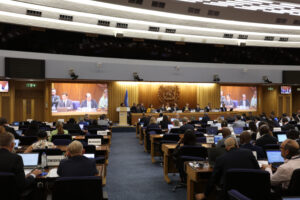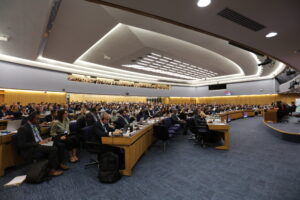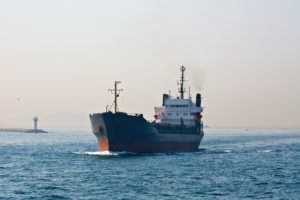A new computer model could help regulators project the impact of shipping policy on global fleet development, operation and emissions.
Researchers have developed an algorithm that claims to help regulators identify optimal environmental targets. By simulating ship owner response to regulations the study, carried out by the University of Tokyo and supported by ClassNK, aimed to find emissions targets that would lead to the required reductions without stifling needed investment in shipping capacity.
The model uses the example of EEXI and EEDI reduction rates between 2023 and 2050. It incorporates a simplified decision tree representing potential responses to regulations from ship owners. Faced with a new emissions regulation, owners can choose to set vessel speeds and order, scrap or refurbish vessels. Several variables are used including technology and fuel costs, carbon taxes, subsidies and even discount rates to differentiate purchasing power amongst multiple simulated operators.
The authors note: “The stakes in international shipping are so complex that it is difficult to predict how regulations will affect the decisions of shipping companies. Insufficient regulation may not curb greenhouse gas emissions, while too strong regulation may curb the economic activities of shipping companies, resulting in a shortage of supply in the international shipping market. The purpose of this study is to propose a method to support the IMO in considering the most effective regulations and policies.”
The simulation naturally found that a larger emission reduction rate would reduce carbon dioxide emissions, but would also reduce the profits of shipping companies. This indicated that decision makers need to make use of subsidies to ensure that shipping companies’ profits are not reduced. Several combinations of reduction rate, subsidy and carbon tax where simulated.
Subsidies and taxes
The study noted that the best options could be those where subsidies are paid from carbon tax revenues – an approach that Japan’s national delegation to IMO has proposed in the form of a feebate market-based measure, comprising both a levy on fossil fuels and a subsidy for operators of zero-emission vessels.
Carbon capture and storage was highlighted as a significant variable in the simulations. Based on these observations the authors noted that the availability of CCS “may delay the widespread use of ammonia-fuelled vessels and thus hinder the reduction of carbon dioxide emissions”.
The issue of effective regulation is timely as the international community aims to deliver rules governing shipping emissions through IMO, with new long-term emissions targets expected to be agreed in July. The Carbon Intensity Indicator – a flawed operational efficiency rating scheme that came into effect this year – has been criticised by environmental lobby groups, for failing to deliver adequate emissions reductions, and by ship operators for failing to accurately reflect vessel emissions.
Regulatory targets must reflect wider global climate ambitions, rather than a narrow focus on the impact of measures on the business of ship operators. But there is clear benefit in understanding in advance how regulations are likely to affect the development and operation of the global fleet.
Related news

Shipping’s emission levy ‘dead in the water’? Not yet

MEPC and diplomacy: Is this how it gets done?

US and Swiss legislators move on shipping emissions


Nuclear prospects advance on UK regulation and fusion breakthrough

































